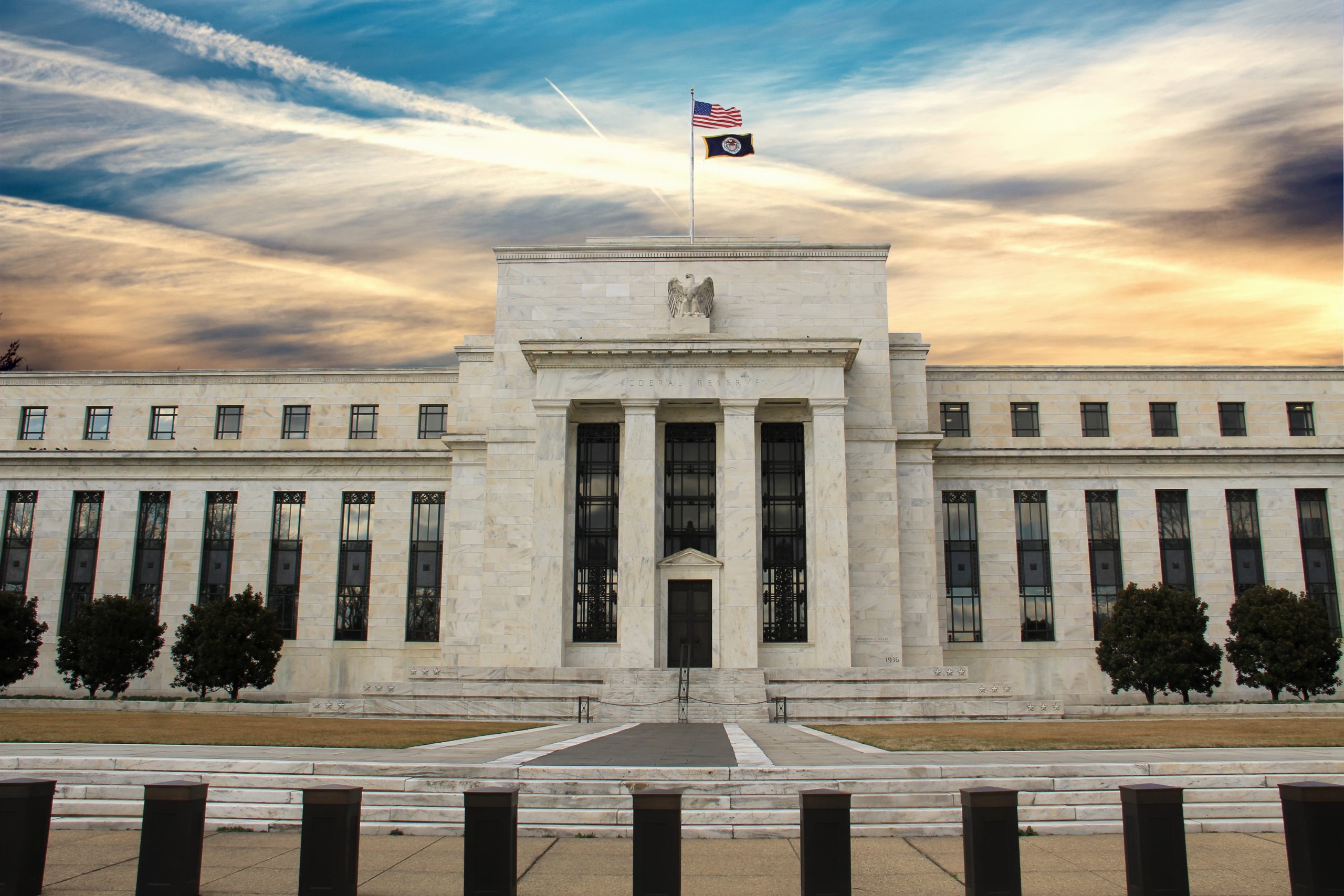Silicon Valley Bank: Backstop or Bailout?
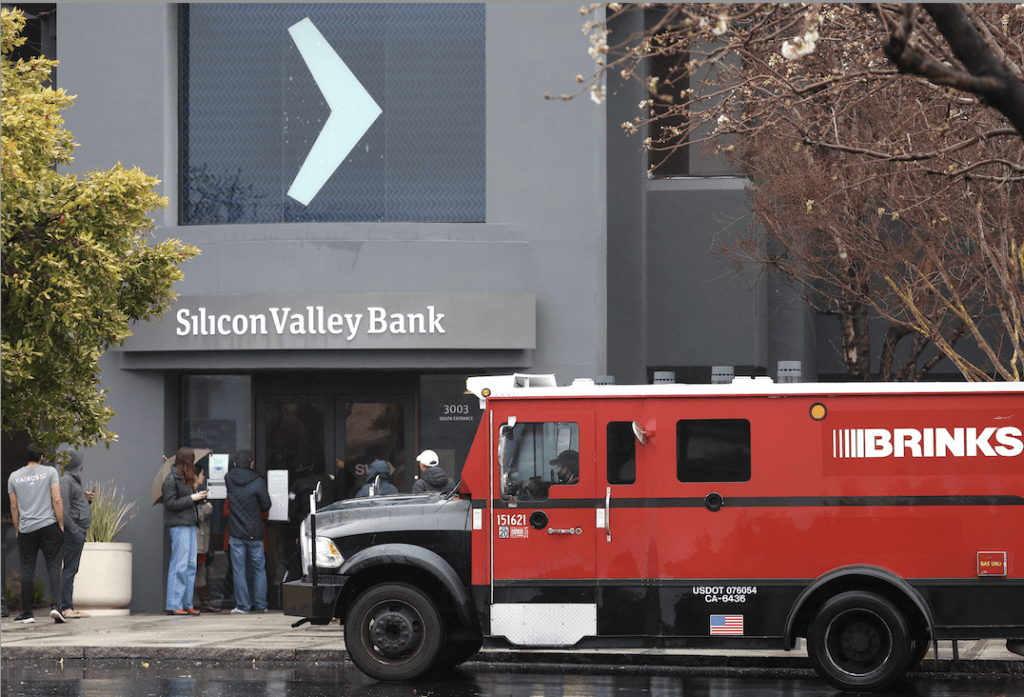
The U.S. government shuttered Signature Bank of New York and announced uninsured deposits from both Silicon Valley Bank and Signature Bank would be fully backstopped and accessible by March 13. The week of March 6, 2023 was a tough one for the United States financial markets.
FOUR THINGS TO KNOW:
- In a surprise move, U.S. banking regulators announced on March 12 that they had seized control of another bank—Signature Bank of New York.
- U.S. regulators also announced that both Silicon Valley Bank and Signature Bank had been labeled “systemic risks to the financial system.”
- As a result of those labels, both insured and uninsured deposits will be fully backstopped by the government, and customers of both banks will be able to access all funds by Monday morning
- The latest bank failures represent the 2nd and 3rd largest in American history, only trailing Washington Mutual in 2008, in terms of total assets.
At the start of the week, Chairperson of the Federal Reserve Jerome Powell indicated that benchmark interest rates in the U.S. will likely increase more than expected in 2023.
Then, on March 8, shares of SVB Financial Group (SIVB) started to spiral lower, as rumors swirled over the financial stability of Silicon Valley Bank—a subsidiary of SVB Financial Group.
By March 10, Silicon Valley Bank had been effectively shut down and taken over by regulators.
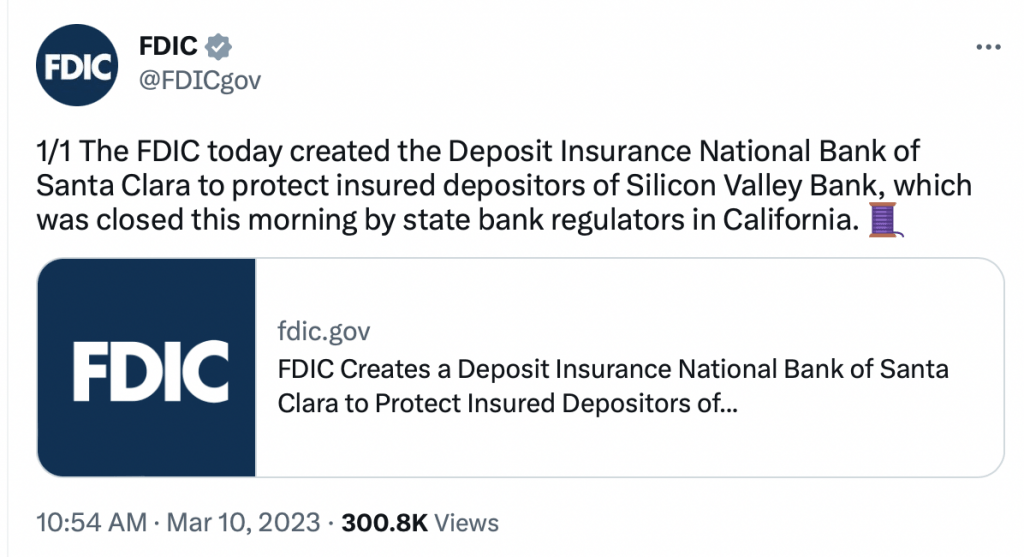
The bank was subjected to an old-fashioned bank run, as depositors that had lost faith in the institution clamored to remove their assets. It’s estimated that roughly $42 billion deposits were withdrawn as of Thursday, March 9—representing nearly 25% of the bank’s total deposits.
On the morning of March 10, the California Department of Financial Protection and Innovation announced that Silicon Valley Bank (SVB) had been involuntarily shut down and that the California regulator had appointed the Federal Deposit Insurance Corporation (FDIC) as receiver.
The FDIC subsequently announced it had created a new entity—the Deposit Insurance National Bank of Santa Clara—and that all of Silicon Valley Bank’s deposits had been transferred to that entity.
This was the first major bank failure since the Financial Crisis (2008-2009), and the second-largest on record.
As if all that wasn’t enough, government regulators stepped in and shut down a second regional bank—Signature Bank (SBNY) of New York—on Sunday March 12.
On Sunday, the New York Department of Financial Services announced it had shuttered operations at Signature Bank and placed it in receivership with the Federal Deposit Insurance Corporation (FDIC).
Somewhat surprisingly, the U.S. government also announced that depositors from both Silicon Valley Bank and Signature bank would have full access to both insured and uninsured deposits as of Monday morning (March 13).
That’s because government regulators chose to label the now-defunct banks as “systematic risks to the financial system,” which gave regulators the necessary flexibility to backstop not only insured deposits, but also uninsured deposits.
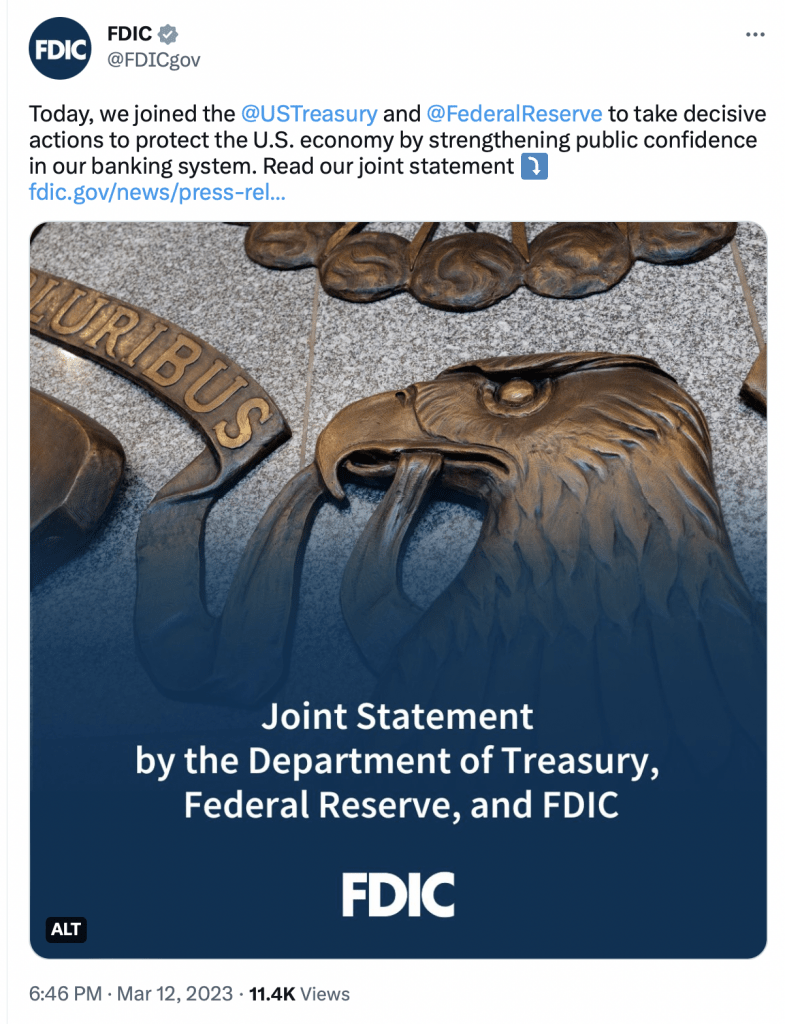
Prior to the joint announcement by the Federal Reserve, the U.S. Treasury and the Federal Deposit Insurance Corporation on March 12, the status of uninsured deposits at Silicon Valley Bank was a complete unknown. An estimated $150 billion in deposits were believed to be uninsured at Silicon Valley Bank.
As a result of these recent developments, depositors at Silicon Valley Bank (and now Signature Bank) are officially struck from the list of potential losers. And the actions taken by U.S. regulators should also help to reduce the pressure on the broader regional banking sector for the foreseeable future.
Absent this decisive intervention, it’s more than likely the selloff in the regional banking sector would have continued on Monday. Moreover, it’s possible that other bank runs may have developed.
Make no mistake, these developments don’t necessarily signal an end to the current banking crisis. After all, two of the largest bank failures in American history just occurred within a couple days of each other.
But the recent intervention by regulators does indicate that risks in the system have been mitigated. For how long, and to what degree, is unknown.
Impact on the Regional Banking Sector
Bank failures represent a serious risk to the financial industry (not to mention the overall economy) because these situations can domino, and ensnare the broader financial system.
At the time of its implosion, Silicon Valley Bank was the 16th-largest bank in the United States, with $209 billion in total assets. That makes SVB the second-largest bank failure in American history.
The largest bank failure was of course Washington Mutual amidst the 2008-2009 Financial Crisis. And at the time of Washington Mutual’s collapse, it was the sixth-largest bank in the United States with roughly $307 billion in total assets.
In both cases, the banks were seized by regulators because of bank runs on their deposits. Back in 2008, Washington Mutual customers withdrew roughly 9% of the bank’s total deposits (approximately $17 billion) over the course of 9 days, before regulators stepped in.
In 2023, estimates suggest that customers at SVB had withdrawn nearly 25% of the bank’s total deposits before the California regulator finally stopped the bleeding.
The loss of confidence in Silicon Valley Bank appears to be linked to the mismanagement of its investments, as opposed to fraud or corruption. The 40-year-old institution is said to have concentrated too much of its capital in long-term bonds. And when the Federal Reserve started aggressively raising rates last year, those investments steadily lost value.
In the banking industry, this is commonly referred to as “borrowing short and lending long.” And in the case of SVB, this classic banking strategy failed in epic fashion when customers demanded immediate liquidity on deposits that were tied up in long-term investments.
Back in January, a verified Twitter user with the handle “Raging Capital Ventures” warned about the risks facing Silicon Valley Bank, as highlighted below.
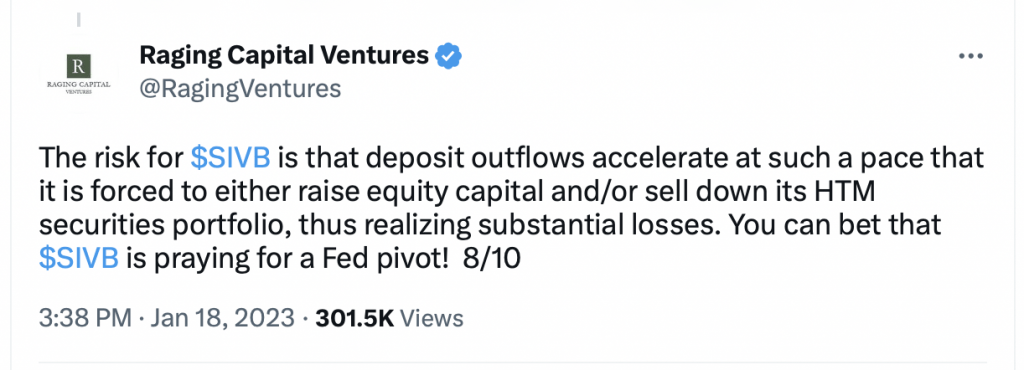
Silicon Valley Bank did try to sell assets to cover the initial wave of customer withdrawals but it wasn’t enough to quell the tide. And those asset sales produced a loss of nearly $2 billion, which ultimately led to a series of downgrades by credit rating agencies.
The arrival of the downgrades—at a time when the bank’s customers were already losing faith in the institution—was akin to pouring fuel on a fire.
Ultimately, the Silicon Valley Bank implosion serves as a key reminder that valuations in the financial sector are very much founded on confidence and psychology. When a financial institution loses the confidence of its customers, it’s virtually impossible for that entity to survive. Especially when that loss of confidence robs the bank of its most vital resource—deposits.
For manufacturers or service providers, a comparable situation might be a complete boycott of its goods or services. In that scenario, the company is effectively starved of revenues, and can’t meet its continuing obligations.
Considering how difficult it is to predict a bank run, it’s nearly impossible to speculate whether another financial institution in the U.S. might be subject to a similar cascade of negative events.
However, investors and traders can at least review the performance of other companies in the financial services sector to assess where elevated risk in the system currently lies.
The list below highlights some of the weakest performers in the financial services sector during the week of March 6 (5-day stock performance):
- PacWest Bancorp (PACW), -55%
- Signature Bank (SBNY), -38%
- Western Alliance Bancorporation (WAL), -35%
- Sunlight Financial Holdings (SUNL), -35%
- First Republic Bank (FRC), -34%
- CURO Group Holdings (CURO), -28%
- Oportun Financial (OPRT), -28%
- Future FinTech Group (FTFT), -27%
- Customers Bancorp (CUBI), -25%
- Charles Schwab (SCHW), -24%
- First Foundation (FFWM), -22%
- Axos Financial (AX), -21%
Aside from Signature Bank, which was shuttered on March 12, it’s entirely possible the companies listed above are all running efficiently with little risk of failure.
However, investors and traders may want to monitor these companies—as well as the broader financial sector—to keep abreast of continuing developments.
Two of the best-known ETFs focusing on regional banks are the SPDR S&P Regional Banking ETF (KRE) and the iShares U.S. Regional Banks ETF (IAT).
For the broader financial services sector, market participants can also monitor the Financial Select Sector SPDR Fund (XLF) and the Vanguard Financials ETF (VFH).
For continuing updates on the fallout associated with the recent bank failures, readers can tune into tastylive, weekdays from 7 a.m. to 4 p.m. CDT.
Sage Anderson is a pseudonym. He’s an experienced trader of equity derivatives and has managed volatility-based portfolios as a former prop trading firm employee. He’s not an employee of Luckbox, tastylive or any affiliated companies. Readers can direct questions about this blog or other trading-related subjects, to support@luckboxmagazine.com.












